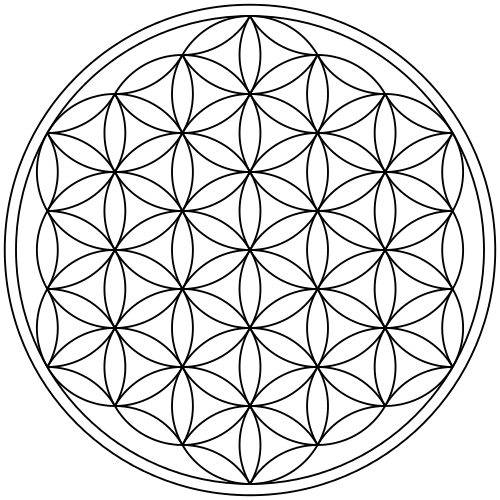Reflections after a research journey
I made a six-week self-funded research trip to Greece, Turkey, France, and Sweden in summer 2014. Since that, I have been systematically collecting pictures of artifacts1 of the Flower of Life into my Pinterest account. In this essay I am going to present inclusively chosen artifacts from my Pinterest account in this essay. All artifacts have the Flower of Life symbol printed, carved or presented on them in some other way.

At the moment of writing this (August 2014), some ome websites already had a good collection of occurrences of the symbol. However, my personal findings on archeological sites and museums, followed by exhausting research on the Internet, have brought up new interesting occurrences of the Flower of Life to daylight. As far as I know, artifacts of the Flower of Life have not been collected before anywhere else in this form or in this scale.
The occurrence of the Flower of Life in Egypt was first reported by the New Age author Drunvalo Melchizedek in his lectures in 80's and 90's. Later on the Flower of Life was officially presented in his two-volume book called The Ancient Secret of the Flower of Life2. Melchizedek first proclaimed the modern term Flower of Life. In his books Melchizedek depicts the Flower of Life by the particular geometrical figure:

The Flower of Life term is often used more broadly to describe different formation phases of the symbol. I will use the Flower of Life term to denote the general pattern as well as different parts of the generation of the symbol. I will call the Flower of Life later by the abbreviation FOL.
Note: the Flower of Life symbol should not be confused with the Fleur-de-lis3 or the Tree of Life4 motifs.
Flower of Life wiki page5 (in August 2014) states that one of the earliest occurrences of the FOL is in the Assyrian stone carpet6 (650 BC). The wiki page also questions the dating of the FOL that is drawn on the Osirian temple stone in Abydos, Egypt. While dating of the FOL in Abydos is debated, it is evident that the geometrical formation of the symbol was known already in 1600 - 1400 BC. From that time, we have artifacts that show the very same decoration motif. Artifacts are:
- Golden rosettes (pic. 6.1.1) from Mycenae, Greece
- Cosmetic boxes (pic. 6.1.2) from Thebes, Egypt
- Ivory whorls (pic. 6.1.5) from Cyprus
- Golden and silver goblets (pic. 6.1.3, 6.1.14) from Marlik, Northern Iran
Many topics surrounding the FOL are highly controversial. This is due to Melchizedek's background in the New Age philosophy. But that should not limit us from doing further research and seeking the origin of the symbol.
- 1.1. Marko Manninen: Flower of Life Pinterest board
- 1.2.
- 1.3. wikipedia.org: Fleur-de-lis
- 1.4. wikipedia.org: Tree of Life
- 1.5. wikipedia.org: Flower of Life archived wiki page
- 1.6. wikimedia.org: Assyrian stone carpet